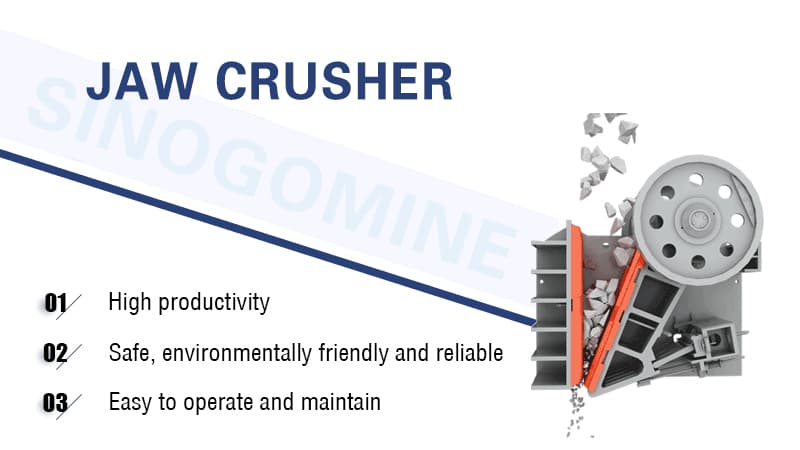Cone Crusher VS Fine Jaw Crusher
As we all know, the common mining crushing production line generally includes three major links: coarse crushing, fine crushing and sand making. Reasonable equipment configuration plays a very critical role in increasing the output and improving the partical shape of the entire line. In the fine crushing link, three types of crushers are commonly used: fine jaw crusher, cone crusher, and impact crusher. However, the impact crusher is mostly used to process soft materials, but do you know what the difference is between fine jaw crusher and cone crusher?
The structure and principle of fine jaw crusher are very similar to that of coarse jaw crusher. The working mode is still driven extrusion type. The material is aqueezed and crushing chamber composed of movable jaw and fixed jaw. Cone crusher adopts laminated crushing method. The motor wall continuously moves toward the crushing wall, squeezing the material between the two and crushing it.

1. Processing power
The feed size of cone crusher is relatively large, generally materials less than 500mm can be used, while the maxmum feed size of fine jaw crusher is 250mm.
In terms of production capacity, cone crusher far exceeds fine jaw crusher. The maxmum output of fine jaw crusher is 105t/h, while the output of cone crusher is more than 1000t/h.
In terms of the hardness of the processed materials, the compressive strength of the two is basically the same, between 300-350Mpa.
2. Overall structure
From the overall shape, cone crusher is 1.7-2 times heavier than fine jaw crusher with the same specification of feed port, and the body is 2-3 times higher than that of fine jaw crusher, so the construction cost of the plant is relatively high.
3. Material handling
Cone crushers are not suitable for crushing wet and sticky ores, but are more suitable for processing hard ores in the form of flakes or long strips, while fine jaw crushers can handle almost all materials.
4. Feeding requirements
The cone crusher can be filled with feed material and directly fed without the need for additional silos and feeders.
Cone crusher can be fed directly bt conveyor belt, without adding silo and feeder, while fine jaw crusher generally cannot be fully fed and requires uniform feeding, which requires additional silo and fedder, increasing the investment cost of auxiliary equipment.
5. Finished product type
When comparing the particle shapes of impact crushers and cone crushers, it was mentioned that the former has a nice particle shape with fewer edges and corners, while the cone crusher has more needle-like particles. Compared with the fine jaw crusher, the cone crusher has a better shaping effect.
6. Price
As we all know, due to the influence of wearing parts and structure, the price of cone crusher is much more expensive than that of fine jaw crusher.
7. Maintenance
Any equipment requires periodic and regular maintenance during use. Compared with fine jaw crushers, cone crushers have high initial investment costs, but their wearing parts are wear-resistant, maintenance cycles are long, and maintenance is simpler and more convenient, saving a lot of manpower and time.
Conclusion
In conclusion, through the comparison of cone crusher and fine jaw crusher, it is found that both have their unique advantages and disadvantages. When purchasing, you need to consider your actual situation and then make a decision.
Taking the cost into consideration, if both equipment can meet the crushing needs and output can be achieved, fine jaw crusher should be given priority. When the output is large and large-scale factory production operations are required, cone crusher should be used. Fine jaw crusher should be used when processing wet and sticky ores, while cone crusher should be used when processing particularly hard ores. The specific choice still needs to be determined according to the actual production needs of the user.




 Send Email
Send Email Get Price List
Get Price List